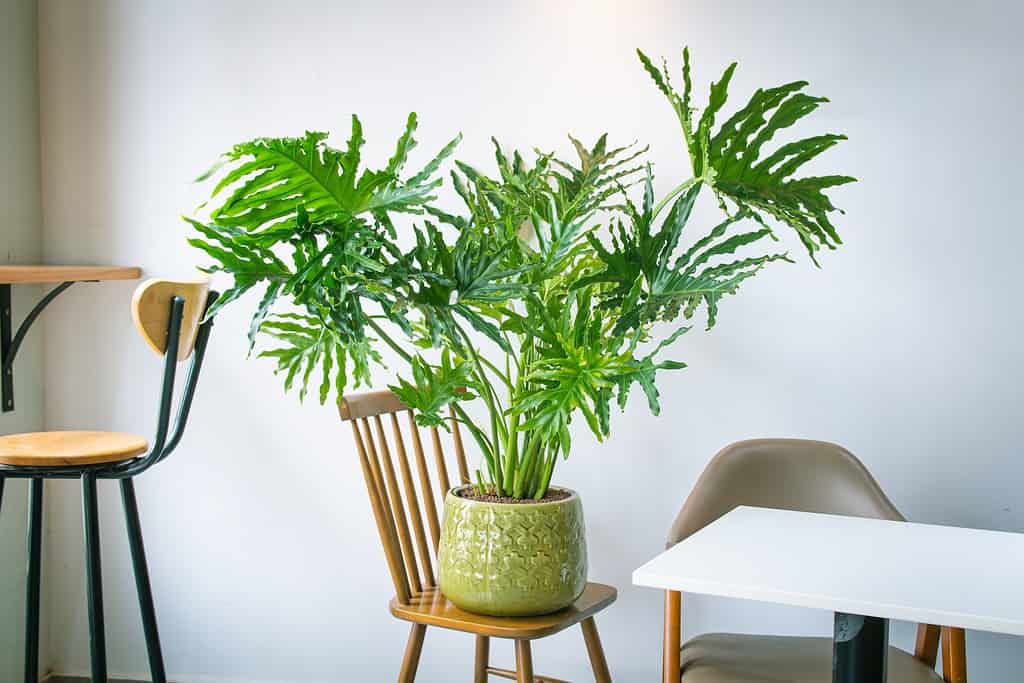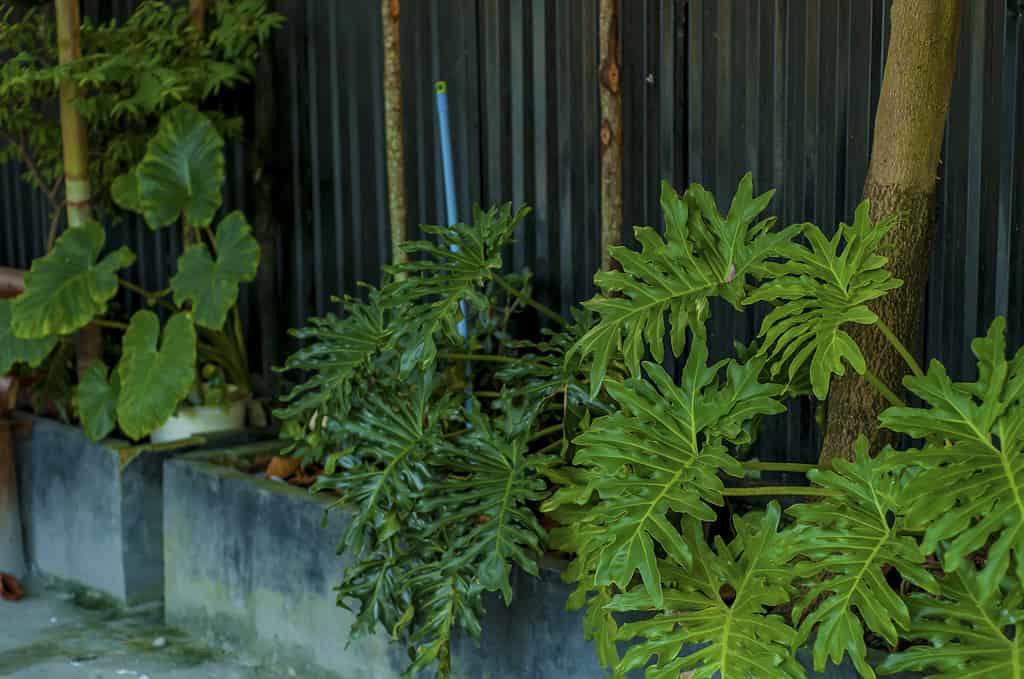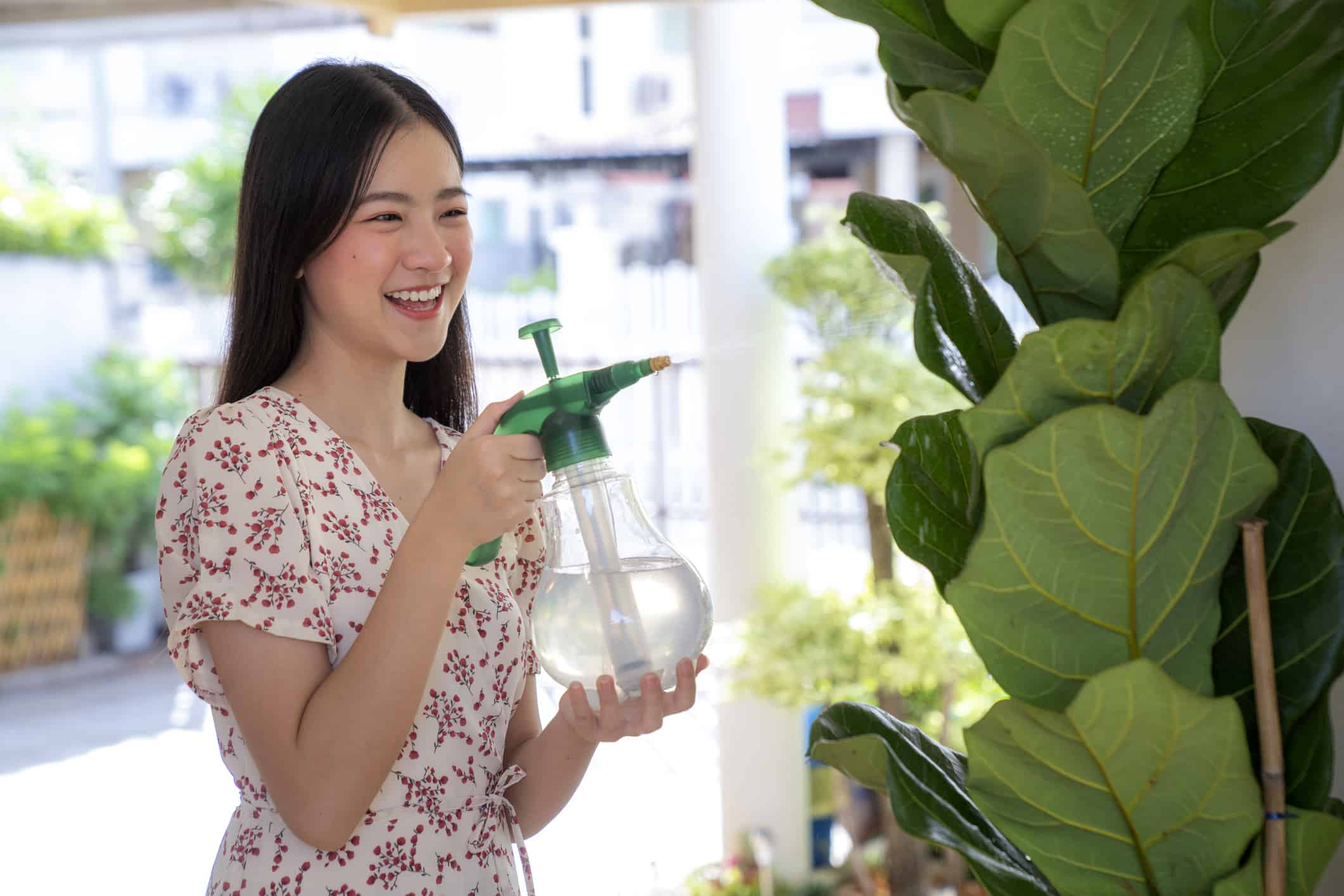Welcome, plant enthusiasts, to the wonderful world of tree philodendrons! These lush and vibrant indoor plants have become increasingly popular for their low-maintenance care and striking appearance. If you’re a plant parent or a newbie looking to add some greenery to your living space, you’re in for a treat. In this article, we’ll dive into the basics of tree philodendron care, ensuring your leafy friend thrives and flourishes.
What is a Tree Philodendron?
The Tree Philodendron, scientifically known as Thaumatophyllum bipinnatifidum, was formerly classified as Philodendron bipinnatifidum and Philodendron selloanum. This intriguing plant belongs to the Araceae family and is part of the Thaumatophyllum genus. Native to the rainforests of South America, particularly Brazil and Paraguay, this captivating plant has garnered much attention for its distinctive characteristics and adaptability.
Appearance and Growth
The Tree Philodendron is renowned for its striking appearance. It boasts large, glossy, and deeply lobed leaves that are pinnately compound, meaning they have multiple leaflets attached to a central stem. These leaflets display a rich green hue and can grow up to three feet in length, creating a lush and tropical ambiance. The plant’s stem is sturdy and woody, allowing it to grow into a tree-like structure. Its growth can reach impressive heights of up to 15 feet in ideal conditions.
Toxicity
One notable aspect of the Tree Philodendron is its toxicity. Calcium oxalate crystals are present in all plant components, including the leaves, stems, and roots, and can cause discomfort and irritation if consumed or if they come into contact with the skin. Therefore, care must be taken when handling this plant, particularly near animals and children. Seek medical treatment if you accidentally swallow anything.
Cultural Significance
The Tree Philodendron has gained popularity as an indoor ornamental plant due to its striking appearance and relative ease of care. It’s a popular pick among people who enjoy indoor gardening since it does well under dim lighting. It adds to the visual appeal of homes, workplaces, and public areas wherever it is placed. Its popularity as a houseplant might also be attributed to the fact that it helps clean the air.
Conservation Status
The Tree Philodendron is not at risk of extinction, which is good news! Unfortunately, though, the tropical rainforests of South America where it is native are under siege by human activities like deforestation and habitat loss. However, the Tree Philodendron’s adaptability and popularity as a cultivated plant have ensured its survival. Conservation efforts in its native range are essential to protect the broader ecosystem it is a part of, as many other species rely on these rainforests for their survival.
Cultivation and Care
Cultivating the Tree Philodendron can be a rewarding experience for plant enthusiasts. When grown indoors, it thrives in well-draining potting soil and requires consistent moisture without allowing the roots to sit in waterlogged soil. Although it can tolerate low light conditions, providing bright, indirect sunlight encourages robust growth and vibrant foliage. Regular fertilization during the growing season, typically spring through summer, helps maintain its lush appearance.
Propagation
The Tree Philodendron can be propagated through various methods, including stem cuttings and division. Stem cuttings can be taken from healthy, mature stems and placed in a rooting medium until they develop roots. Division involves separating the plant into smaller sections, each with its root system. Both methods are effective for creating new plants.

Tree Philodendrons are popular houseplants due to their relative ease of care and unique look.
©Mid Tran Designer/Shutterstock.com
Tips for a Healthy Tree Philodendron: Propagation and Care
Whether you’re a seasoned gardener or a novice plant enthusiast, this comprehensive guide will provide you with valuable tips on how to successfully grow, care for, and maintain a Tree Philodendron, ensuring its health and vibrancy in your indoor or outdoor space!
1. Propagate from Stem Cuttings
Propagating Tree Philodendrons from stem cuttings is a popular and effective method. Begin by selecting a healthy stem with at least a few nodes (the points where leaves emerge). Cut the stem just below a node using sharp, clean scissors or pruning shears. Ensure that the cutting is around four to six inches in length.
Next, let the cutting air dry for a day or two; this helps to prevent rotting when it’s planted. Once it has dried, plant the cutting in an organic potting mix that drains well, burying at least one node under the soil. Water the cutting thoroughly and place it in a warm, indirect light location. Keep the soil consistently moist but not soggy. Over time, the cutting should develop roots and begin to grow into a new Tree Philodendron.
2. Propagate via Division
The division is another effective propagation method for mature Tree Philodendrons. Carefully remove the plant from its pot and gently separate it into smaller sections, ensuring that each section has its roots. Plant these sections in separate pots with fresh potting mix, and water them thoroughly. Maintain proper care conditions, and these divided sections should establish themselves as individual plants.
3. Propagate via Air Layering
Air layering is a technique suitable for more established Tree Philodendron plants. Choose a healthy, mature stem and make a small incision, or remove a portion of the outer bark. Apply a high-quality rooting hormone to the exposed area. Then, wrap this part of the plant with wet sphagnum moss and wrap it in plastic wrap, securing both ends with twine. Roots should develop within a few weeks. Once roots are sufficiently developed, cut the stem below the air layer and plant it in a new pot with fresh potting mix.
4. Grow Your Plant with Seeds
While growing Tree Philodendrons from seeds is possible, it’s a more time-consuming method compared to cuttings and division. Begin by planting seeds in a well-draining potting mix and lightly cover them with soil. Don’t forget to keep the soil consistently damp, and put the pot in a warm, humid spot. Germination can take several weeks to months, so patience is key when growing from seeds.
5. Choosing the Right Location

Tree Philodendrons need a nice, sunny spot where they can get access to bright and indirect sunlight.
©Hari Sucahyo/iStock via Getty Images
One of the first steps to ensuring the health and vitality of your Tree Philodendron is selecting the right location. This plant thrives in bright, indirect light. While it can tolerate lower light conditions, it will flourish when placed near a sunny window with mild, filtered sunlight. Avoid harsh direct sunlight exposure, as this much sunlight can scorch the leaves.
6. Selecting the Appropriate Container
Make sure the pot you use to cultivate your Tree Philodendron includes drainage holes if you intend to do so inside. Root rot is caused by waterlogging and may be avoided by planting in well-drained soil. The size of the container should be adequate for the plant at the moment, with some extra space in case it expands. Repotting may be necessary as the plant grows.
7. Proper Soil and Potting Mix
Tree Philodendrons thrive in a well-draining potting mix. You can create a suitable mix by combining equal parts of potting soil, perlite, and orchid bark. This mix ensures the right amount of drainage while retaining enough dampness for the plant. Re-potting your Tree Philodendron every two to three years with a fresh potting mix can help maintain its vitality.
8. Watering Considerations
Watering is a critical aspect of Tree Philodendron care. These plants thrive in constantly damp circumstances, but cannot survive in saturated soil. The size of the plant, the size of the pot, the relative humidity, and the temperature are all considerations when determining how often to water the plant. Simply sticking your finger into the dirt for an inch will tell you whether or not to water. If it feels dry at that depth, it’s time to water.
Water the plant thoroughly. Allow any excess water to drain completely from the pot. Don’t forget to empty the plate or saucer underneath the pot to keep the plant from sitting in standing water. During the growing season (spring and summer), you may need to water more frequently, while in the dormant season (fall and winter), you should reduce the frequency to prevent overwatering.
9. Maintaining Humidity
Tree Philodendrons thrive in humid conditions, which can be challenging to maintain indoors, especially in drier climates or during the winter months. To increase humidity levels, you can:
- Use a Humidity Tray: Place a tray filled with water and pebbles near your Tree Philodendron. The plant’s immediate environment will become more humid as water evaporates.
- Mist the Leaves: Humidity can be provided by sprinkling the leaves with water regularly; however, it is important not to overdo it, since this might lead to fungal problems.
- Use a Humidifier: Keeping the humidity levels in a space consistent may be difficult, especially if you have many indoor plants.

Like the fiddle leaf fig (pictured), Tree Philodendrons prefer humidity levels over 50%, as it mimics their native environment in the rainforests of South America.
©iStock.com/NeoPhoto
10. Fertilizing Routine
To keep your Tree Philodendron healthy and thriving, regular fertilization is essential during the growing season (spring and summer). Use a balanced liquid fertilizer, diluted to half strength, and apply it every four to six weeks.
11. Pruning and Maintenance
Pruning your Tree Philodendron can help maintain its shape and appearance. You can trim off any yellowing or dead leaves using clean, sharp scissors or pruning shears. Additionally, if the plant becomes too leggy or sparse, you can prune it back to encourage bushier growth.
12. Pest and Disease Management
While Tree Philodendrons are relatively hardy, they can still be susceptible to pests and diseases. Common pests that may affect these plants include spider mites, aphids, and mealybugs. Regularly inspect your plant for any signs of infestation, such as webbing, discolored leaves, or sticky residue.
If you detect any signs of pests, be sure to isolate the afflicted plant right to prevent the pest infestation from spreading to your other plants. You can use a reputable insecticidal soap or neem oil to treat the pests. Be sure to follow the product’s instructions carefully.
In terms of diseases, root rot is a significant concern, particularly if the plant is overwatered or sits in waterlogged soil. To prevent root rot, ensure proper drainage and avoid allowing the plant to sit in standing water. If you suspect root rot, trim away affected roots, repot the plant in fresh soil, and reduce watering until the plant recovers.
13. Support and Training
As your Tree Philodendron grows, it may benefit from some support or training. If you desire a specific shape or structure, you can use stakes or trellises to guide the plant’s growth. Gentle ties or clips can help secure the stems without causing damage.
14. Winter Care
During the dormant season (fall and winter), your Tree Philodendron may require some adjustments in care. Reduce the frequency of watering and withhold fertilization. The plant’s growth may slow down during this time, so be patient and avoid overwatering, as the lower light levels can lead to waterlogged soil.
13. Temperature and Environment
Tree Philodendrons prefer temperatures between 65 degrees F to 80 degrees F. Avoid exposing the plant to temperatures below 50 degrees F, as they can be sensitive to cold drafts. Ensure that the plant is shielded from heating vents and air conditioning, which can cause temperature fluctuations.
14. Grooming and Cleaning
Regularly wipe the leaves of your Tree Philodendron with a damp cloth or sponge to remove dust and debris. This not only enhances the plant’s appearance but also allows it to better absorb light and maintain optimal health.
15. Support for Heavy Growth
As your Tree Philodendron matures, it may develop heavy foliage that can weigh down its stems. Providing sturdy supports, such as stakes or trellises, can help prevent the plant from becoming top-heavy and improve its overall appearance.
16. Repotting
Younger Tree Philodendrons may need repotting every two to three years to accommodate their growth. When repotting, choose a pot that is one size larger than the current one. Add fresh potting mix to the new container and replant the Tree Philodendron at the same depth it was previously growing.
17. Adequate Drainage
Ensuring proper drainage is crucial to prevent root rot. Use a container with drainage holes and elevate the pot slightly to allow excess water to escape. Use a saucer to catch any runoff but empty it regularly to prevent the plant from sitting in water.
18. Monitoring for Overcrowding
If you have multiple plants in the same container, ensure that they are not overcrowded. Consider repotting or dividing the plants as needed to maintain healthy growth.
19. Root Pruning and Size Control
For mature Tree Philodendrons that have outgrown their pots, root pruning can be an alternative to repotting. Carefully remove the plant from its container and trim away excess roots. Repot the pruned plant in the same pot or a slightly larger one with a fresh potting mix.
If your Tree Philodendron becomes too large for its space, you can prune it to manage its size. Focus on removing the longest stems or branches, cutting just above a leaf node. Pruning promotes new growth and helps maintain the plant’s shape.
20. Regular Inspection and Monitoring Growth Patterns
Periodically inspect your Tree Philodendron for any signs of stress, disease, or pests. Early detection allows for prompt intervention and treatment, minimizing potential damage to the plant.
And, of course, be sure to observe the growth patterns of your Tree Philodendron. This can help you identify any unusual behavior, such as stunted growth or legginess, and adjust care accordingly.
Growing, caring for, and maintaining a Tree Philodendron can be a rewarding experience for plant lovers. By providing the right conditions, including proper lighting, well-draining soil, and appropriate humidity levels, you can ensure the health and vibrancy of this striking tropical plant. With these tips and a little attention to detail, you can enjoy the lush beauty of your Tree Philodendron for years to come. Happy planting!
The photo featured at the top of this post is © wahid hasyim asyari/iStock via Getty Images
Thank you for reading! Have some feedback for us? Contact the AZ Animals editorial team.







